It’s our very great hope that each of you, our readers, will greatly enjoy and appreciate this article about these 7 Intriguing Island Reptiles. We certainly enjoyed compiling the data for your perusal. May it provide you all with both education and increased awareness.
Naturally, however, these few species represent only the tiniest part of the abundance of wildlife in this region. Indeed, this part of the world literally teems with fauna and flora. To learn of some of the other wonders present here, check out some of our other articles.
New Guinea Crocodile
New Guinea Crocodile Facts
- Leading off this article about 7 Intriguing Island Reptiles we present the impressive creature known as the New Guinea Crocodile.
- This impressive, reclusive reptile most frequently goes by this informative, as well as descriptive, common name. It also possesses several alternate monikers, though. These include such diverse terms as Singapore large grain and Buaya air tawar.
- Most professionals, such as researchers, typically refer to it by its formal, scientific name, however. That, though, is another of the tongue-twisting terms so prevalent in the field. This wonder bears the technical name of the Crocodylus novaeguineae.
- The American herpetologist, Karl Patterson Schmidt made the first formal recognition of the animal as a separate and distinct species. This scientifically noteworthy deed occurred in the year 1928. Experts previously considered it a subspecies, but no longer.
- Thankfully, this marvel of Nature appears to be maintaining a population base across its range that’s both sizeable and stable. This further seems to hold true despite the past depredations inflicted upon its population by mankind, prior to conservation efforts.
- Due to these fortunate factors, it holds a status all too rare these days. That’s because the IUCN currently lists the New Guinea Crocodile as a Species of Least Concern. That status is reflected in the organization’s published Red List of Threatened Species.
- This reptilian wonder nevertheless faces potential threats. These, though, are those shared to various degrees by most species. Habitat degradation and loss, due to human expansion remain real threats. Its greatest danger, though, is likely climate change.
New Guinea Crocodile Physical Description
Like most of its relatives, the dazzling New Guinea Crocodile easily impresses those who encounter it. It manages to do so despite one fact, though. That’s due to the fact that it ranks as a small variety of crocodilian. That, however, still leaves it ranked as a large reptile.
The remarkable animal also follows another pattern held to by most of its brethren. That holds true due to the fact it displays a moderate degree of sexual dimorphism. In its specific case, though, this physiological characteristic manifests itself in terms of sheer size.
More specifically, the males of the species attain a larger physical length than their female counterparts. The males reach a maximum known length measuring as much as 11 ft (3.5 m). These same individuals further reach weights equaling as much as 650 lb (295 kg).
The females, meanwhile, grow only about 8.9 ft (2.7 m). These tend to have a somewhat stockier build than males, though. Despite the difference in length, the two genders attain approximately the same weight. Most, of either sex, though, remains somewhat smaller.
The body of the New Guinea Crocodile presents an intriguing design. Its color scheme ranges from brown to dark gray. It also presents dark bands on both the body and the tail. These, however, generally tend to become less obvious as the individual grows in size.
Its snout widens as the individual ages, begninning life much narrower in construction. An intriguing characteristic further sets it apart from its relatives. Lengthwise ridges near the eyes, and a set of granular scales on the neck form a pattern unique to the species.
- Kingdom: Animalia
- Phylum: Chordata
- Class: Reptilia
- Order: Crocodilia
- Family: Crocodylidae
- Genus: Crocodylus
- Species: C. novaeguineae
New Guinea Crocodile Distribution, Habitat, and Ecology
Unfortunately, both for the animal itself, as well as those of us who appreciate Nature, the New Guinea Crocodile evolved as native to an extremely limited area. That region of the globe lies within a portion of the southwestern Pacific Ocean. It’s better known as Oceana.
As its very name suggests, that zone of habitation falls within the boundaries of the island of New Guinea. That location futher lies roughly 93 mi (150 km) from the continent of Australia. Even there, though, it only lives in the more northern section, especially inland.
Within that limited area, however, it makes the most of its opportunities. That’s due to the fact that it makes its home in several different types of ecosystems. These consist of regions of marshes and swamps, as well as many of the lakes found in that part of the island.
Though individuals rarely venture into areas close to the coast, it does happen on occasion. There, it survives in partially brackish waters, where the freshwater and sea partially combine. Yet, the animal never appears in areas where the larger Saltwater Crocodile lives.
Like most of its related creatures, the magnificent New Guinea Crocodile evolved as a primarily aquatic species. It’s also principally a nocturnal animal. Individuals typically spend the majority of the day underwater, with only their eyes and nostrils above the surface.
It also feeds opportunistically, as others of its kind. The diet mainly consists of various fish species, of course. Nonetheless, individuals consume virtually any prey of sufficient size it encounters. In addition to fish, this includes frogs, crabs, snakes, shrimp, birds, and others.
Lau Banded Iguana Facts
- The next selection chosen for inclusion in the listing of 7 Intriguing Island Reptiles is the fascinating animal named the Lau Banded Iguana.
- The descriptive term used for it serves as the common name for an intriguing species of reptile. For the moment, this remarkable product of evolution has no other generally accepted name. It’s also often confused with similar local species.
- The majority of professionals, however, such as researchers, typically refer to it by its formal name. Like most such monikers, though, it’s hard for the layman to pronounce. That’s because the animal bears the technical name of Brachylophus fasciatus.
- The creature received that official name due to the efforts of the noted French zoologist, Alexandre Brongniart. He accomplished the first acknowledgement of it as a separate and distinct species. This scientifically noteworthy event occurred in 1800.
- Unfortunately, however, this creation of Nature appears to be steadily dwindling in numbers in the wild. Its current zone of habitation measures much smaller than in the past. It’s also present in a neighboring region, though only as an introduced species.
- Due to a combination of factors, the IUCN currently lists the Lau Banded Iguana as Endangered. That status appears on the organization’s published Red List of Threatened Species. The near future could see its status worsen even further, though.
- The reptile faces several threats to its existence. Its most immediate threats include habitat loss due to human activities, such as agricultural practices, as well as danger from introduced species. Long term, however, its greatest threat, is climate change.
Lau Banded Iguana Physical Description
The beautiful Lau Banded Iguana easily captivates those fortunate enough to encounter it in the wild. It also does so for various reasons. Sheer physical size, however, isn’t among them. That’s true since the animal ranks as approximately average-sized among its kindred.
Like many of those related species, it also displays a moderate degree of the physiological trait of sexual dimorphism. In its specific case, however, this trait manifests itself in terms of appearance, instead of size. Adults of both sexes thus attain roughly the same physical size.
That includes an average length, including body and tail, of 24 in (60 cm). Its weight further averages about 0.44 lb (0.2 kg). Each also has a comparatively small crest running down the back of its head and spine. This specific feature, however, only averages 0.2 in (0.5 cm).
It’s in terms of appearance, though, that the genders of the reptile differ. That’s because males display several pale white bands that cross their background colors. These markings average roughly 0.8 in (2 cm) in width. Each of the males shows either 2 or 3 of these.
Otherwise, the appearance of both genders of the Lau Banded Iguana remains the same. That principally consists of an emerald green background shade. Small, off-white spots or streaks also develop on the neck. Males, though, typically display more of each marking.
Among females, these spots additionally tend to develop in fewer numbers. The underside of both males and females, however, presents the same color scheme. That consists of a light yellow. All individuals also have the ability to modify their color at will, for camouflage.
- Kingdom: Animalia
- Phylum: Chordata
- Class: Reptilia
- Order: Squamata
- Family: Iguanidae
- Genus: Brachylophus
- Species: B. fasciatus
Lau Banded Iguana Distribution, Habitat, and Ecology
Regrettably, the amazing Lau Banded Iguana possesses a highly restricted zone of habitation. Evidence does indicate, however, that the iguana once existed across a somewhat greater range. Even at the time of its greatest dispersal, though, it never lived across a vast range.
That’s due to the fact that it previously inhabited a full group of islands, the Lau Islands. These in turn lie within the greater group forming the island country of Fiji. Now, however, its population seems to be restricted to only eleven islands within the smaller group.
Even inside of that limited range, though, it evolved to prefer a specific type of environment. Due to that preference, it most frequently appears in regions of wet forest. Smaller concentrations do also make their home in forests with slightly lower moisture levels.
For reasons still not completely understood, the animal also displays a marked preference for certain altitudes. On all islands it lives on within its territory, the vast majority of individuals live at alttitudes ranging from 656 – 1,640 ft ( 200 – 500 m) above sea level.
It also requires the presence of numerous trees, thus its favoring forested regions. There, it lives as a primarily arboreal species. It also evolved as diurnal in nature. At night, individuals retreat to the shelter of the trees. This provides a measure of protection from predators.
By day, the Lau Banded Iguana descends to the forest floor. There it forages throughout its range, as a herbivore. The reptile feeds on a variety of local plants, typically consisting of the flowers, fruit, and leaves. It’s especially fond of papayas, bananas, and hibiscus flowers.
Saltwater Crocodile
Saltwater Crocodile Facts
- The third amazing denizen of the earth placing in this compendium of 7 Intriguing Island Reptiles is the distinctive Saltwater Crocodile.
- This magnificent work of Nature and evolution most frequently goes by its informative common name for perfect reasons. That term, however, accurate, isn’t the only name applied to it, however. In point of fact, several others are sometimes used.
- The alternate names themselves also often provide clues to its nature. These include such terms as the Indo-Pacific crocodile, esturarine crocodile, sea crocodile, and marine crocodile. The animal’s also sometimes informally referred to as the saltie.
- Professional researchers, meanwhile, typically refer to the creature by its scientific name. That’s the technical name of Crocodylus porosus. Regardless of which name one chooses to use when referring to it, though, it’s an especially impressive crocodilian.
- The renowned German naturalist Johann Gottlob Theanenus Schneider made the first formal recognition of the reptile. The well known researcher acknowledged this incredible example of evolution as a separate and distinct species in the year 1801.
- The animal appears, for the moment, at least, to be maintiaing a population base that’s both stable and sufficient. That further seems to hold true throughout the entirety of its range. The IUCN therefore, presently lists the reptile as Least Concern on its Red List.
- The amazing Saltwater Crocodile nevertheless faces dangers that could potentially threaten it in the future. Habitat loss poses a potential threat, due to human expansion. The ongoing process of climate change, however, likely condstitutes its greatest threat.
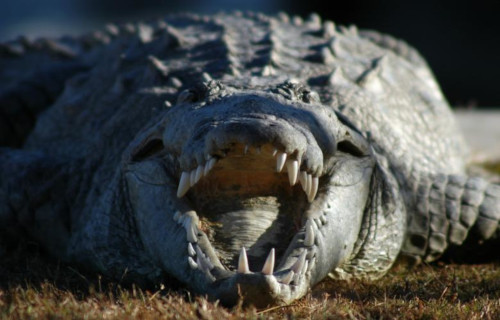
Saltwater Crocodile Physical Description
Sheer size alone isn’t the only trait of the Saltwater Crocodile that impresses those who view the creature. That characteristic nonetheless certainly does bear mentioning. That’s because this species presently constitutes the largest of all currently known crocodilians.
The species also, like many of its relatives, displays a degree of the physiological characteristic of sexual dimorphism. In its specific case, though, this ranks as particularly severe. That’s due to the fact that the males attain a length roughly twice that of females.
The significantly longer males reach an average legnth measuring about 20 ft (6 m). Exceptional specimens, however, sometimes attain lengths of as much as 23 ft (7 m). The males further reach a weight that averages approximately 1,000 lbs (453.6 kg).
Females of the species, meanwhile, only attain an average length measuring approximately 10 ft (3 m). Even the exceptional individuals rarely exceed this by much. Sheer mass, however, remains starkly contrasted, with females rarely exceeding 330 lb (150 kg)!
While rare indivuals exceed these weights in both genders, the two sexes remain otherwise virtually indistinguishable in simple appearance. Its snout also develops wider than most related species. A pair of ridges also extends the length of the snout, from the eyes.
The body of the Saltwater Crocodile further differs from most others in its girth. Its body develops as much stouter in form. In coloring, most adults manifest a dark, greenish-drab shade. A few light gray or tan areas sometimes appear, however, in various spots.
- Kingdom: Animalia
- Phylum: Chordata
- Class: Reptilia
- Order: Crocodilia
- Family: Crocodylidae
- Genus: Crocodylus
- Species: C. porosus
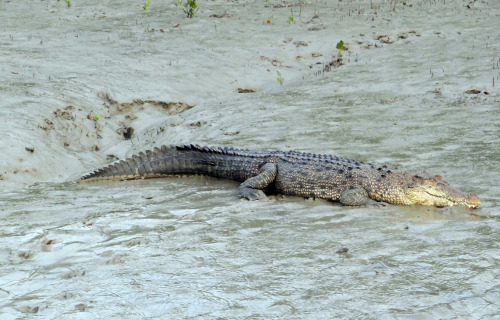
Saltwater Crocodile Distribution, Habitat, and Ecology
Fortunately, the remarkable Saltwater Crocodile evolved as native to a comparatively broad swathe of the globe. Interestingly, furthermore, that range roughly straddles the equator. It further does so, by random chance, almost equally across both hemispheres.
This animal appears as far north as the eastern coast of the country of India. From there, its range extends through Sri Lanka, Bangladesh, Myanmar, Thailand, Malaysia, Cambodia, and Vietnam, to name a few. That range extends as far south as northern Australia.
Wherever it makes an appearance, though, it displays highly specific preferences in terms of habitat. That’s because the remarkable crocodilian makes its home solely along the coastline. Individuals do, however, occasionally swim far out to sea, outside their range.
Most specimens spend the vast majority of their time inhabiting very specific habitat types. These principally consist of river deltas and mangrove swamps. In some regions, the incredible animal also migrate to warmer parts of its range during the local winter season.
The Saltwater Crocodile also differs from most of its kin in yet another manner. Although most crocodilains live as social creatures, this species mainly lives a solitary life. Most individuals, especially the males, further exhibit extremely strong territorial drives.
It also spends much of its time in a lethargic state. This allows it to survive for months at a time without feeding. When it does feed, however, it does so strictly as a carnivore, like other crocodiles. It further represents an apex predator throughout most areas of its range.
Aldabra Giant Tortoise
Aldabra Giant Tortoise Facts
- The species appearing fourth in this compilation of 7 Intriguing Island Reptiles bears the name of the Aldabra Giant Tortoise.
- This amazing reptilian masterpiece of evolution most frequently goes by informative common name for a very good reason. Unlike many species, of all kinds, around the world, for the moment no other generally accepted alternate to this term exists.
- Scientific professionals, such as researchers, however, typically use the technical term when referring to the animal. That term, though, is somewhat difficult for laymen to pronounce. That’s because it bears the formal name of the Aldabrachelys gigantea.
- It received that moniker due to the efforts of August Friedrich Schweigger. The respected German naturalist recorded the first official recognition of the creature as a separate and distinct species. This scientifically noteworthy deed took place in 1812.
- Regardless of the term one chooses to use for it, though, it remains a remarkable product of Nature. It also stands out from its peers for an impressive reason. That’s due to the fact that it presently ranks as one of the largest known tortoises in the world.
- For the moment, the population of the Aldabra Giant Tortoise appears to be stable. That fortunate situation also seems to hold true throughout the entirety of its natural range. Despite this, however, the IUCN currently lists it as Vulnerable on its Red List.
- That status exists due to a combination of factors. The extent of its range limits its possibilities, for one. Other possible threats include habitat loss due to human expansion. Its greatest threat, though, may come in the form of ongoing climate change.
Aldabra Giant Tortoise Physical Description
To be certain, its sheer size isn’t the only impressive thing about the fabulous Aldabra Giant Tortoise. Nonetheless, as its very name implies, that aspect of its nature certainly merits appreciation. In the case of this specific tortoise, though, Nature took things up a notch.
Like many of its relatives, however, the animal also displays a moderate degree of the physiological characteristic of sexual dimorphism. In its specific case, this trait manifests itself in terms of sheer size. More specifically, females attain a smaller average size.
The carapace of most males attains an astounding average length of roughly 48 in (122 cm). An average weight, furthermore, equals approximately 550 lbs (250 kg)! Exceptional individual specimens do occur occasionally, of course, reaching even greater sizes.
Females of the species, meanwhile, reach an average length only about 36 in (91 cm). Their average weight also naturally remains less. This gender attains a typical weight equalling roughly 351 lbs (159 kg). Both genders reach smaller measurements in captivity.
Otherwise, the two genders of the intriguing Aldabra Giant Tortoise appear virtually indistinguishable in appearance. The carapace additionally generally presents as tan or brownish in color. The shell of the reptile also often manifests a highly domed shape.
Meanwhile, its powerful legs develop as relatively stocky in construction. These also have a heavily scaled outer covering. Its the neck that stands out the most, perhaps, though. This develops as more elongated in relation to body size than most of its many kindred.
- Kingdom: Animalia
- Phylum: Chordata
- Class: Reptilia
- Order: Testudines
- Family: Testudinidae
- Genus: Aldabrachelys
- Species: A. gigantea
Aldabra Giant Tortoise Distribution, Habitat, and Ecology
Unfortunately, the magnificent Aldabra Giant Tortoise possesses an extremely limited natural habitat range. As the name implies, though, that includes the Aldabra Atoll. This collection of islands forms part of the larger Seychelles group, in the Indian Ocean.
Regrettably, the majority of their natural population appears in that one restricted area. A few other, naturally occurring groupings also exist, however. These much smaller colonies appear in a National Park, on Moyenne Island, and the island of La Digue.
Yet another, albeit extremely tiny population, appears natively in one more area. That tiny grouping lives on the islet of Changuu, located near Zanzibar. This location, though, only covers about 46 acres (18.6 ha). Small captive populations also exist, in a few parks.
Thankfully, though, within those limited zones of habitation, their nature serves them well. That’s because they evolved as highly adaptible. Due to this ability, individuals and groups appear in such diverse areas as scrub, grasslands, mangrove forests, and coastal dunes.
The impressive Aldabra Giant Tortoise evolved as primarily herbivorous. Its principal source of nourishment consists of local woody plant stems, leaves, and grasses. Individuals occasionally consume small quantities of invertebrates and carrion, including dead tortoises.
Locally available fruit also serves as a source of nourishment. The long neck allows them to feed on objects as much as 3.3 ft (1 m) above the ground. Specimens may live either solitary lives, or as part of small groups. Maximum lifespan is thought to exceed 200 years!
Rough-nosed Horned-Lizard
Rough-nosed Horned-Lizard Facts
- Next up among these choices to appear in this compilation of 7 Intriguing Island Reptiles we present the Rough-nosed Horned-Lizard.
- Understandably, this intriguing reptile, with its distinctive appearance, most frequently goes by the common name due to its unique appearance. However, like many species throughout the world, the remarkable animal also holds another general name.
- In this case, that’s the more informative term of the Sri Lanka horned agama. Scientific professionals, such as researchers, though, tend to use the formal scientific name when referring to it. But that’s the relatively simple name of the Ceratophora aspera.
- It received this designation due to the work of a respected researcher. The German-born British zoologist, Albert Charles Lewis Gotthilf Günther holds that distinction. That’s because he accomplished the first recognition of it as a distinct species in 1864.
- Regardless of which term one chooses to employ, however, it’s a fascinating product of evolution. Its unique physical attributes also set it apart from all other known members of its genus. This only serves to enhance its particular appeal to researchers, though.
- Unfortunately, the Rough-nosed Horned-Lizard also seems to be dwindling rapidly in population. This regrettable trend further appears to hold true throughout the entirety of its range. The IUCN, therefore, currently lists the astounding lizard as Endangered.
- Several factors now threaten it. Habitat loss due to human activities ranks high among those, to be certain. Its greatest threat, however, now comes from climate change. Its own limited habitat range further serves to greatly augment the effects of each of these.
Rough-nosed Horned-Lizard Physical Description
Perhaps most incredibly, the Rough-nosed Horned-Lizard manages to pack all its intriguing characteristics into a very small body. That’s not completely surprising, though. That’s because Nature holds no distinction regarding such factors as size and impressiveness.
The creature does, however, stand out from the other members of its genus in one way. That’s where sheer physical size is concerned. That holds true due to the amazing fact that the animal displays a moderate degree of the physiological trait of sexual dimorphism.
More specifically, it manifests this aspect of its nature in the fact that females attain a slightly greater overall length than their male counterparts. This gender, though, only reaches lengths of about 1.6 in (4 cm). Yet the males remain moderately smaller in size.
This diminutive reptile also displays a striking pattern of coloring. This principally consists of a background of either dark yellow or light brown. A total of 17 darker bands, however, extend from head to tail. The space between these shows a much lighter shade.
Its body further develops with a slightly compressed shape. Each individual also possesses a unique, x-shape dorsal ridge, located directly behind the head. The creature further develops a very small crest, typically appearing along the region of the neck of the species.
The most noticeable trait of the Rough-nosed Horned-Lizard, though, remains the appendage to the nose. This marvel of nature distinguishes itself from related species yet again in this. That’s due to the fact the rostrum comprises up to 24% of the total length!
- Kingdom: Animalia
- Phylum: Chordata
- Class: Reptilia
- Order: Squamata
- Family: Agamidae
- Genus: Ceratophora
- Species: C. aspera
Rough-nosed Horned-Lizard Distribuiton, Habitat, and Ecology
The astonishing Rough-nosed Horned-Lizard has one natural attribute that unfortunately works against it. That’s the fact that it evolved as endemic to an extremely limited habitat range. Evidence further indicates that it never existed outside that specific region.
This holds true because it only appears in a tiny part of the region consisting of southern Asia. In point of fact, the unique lizard lives only on one specific island. That’s the island comprising the nation of Sri Lanka, a site holding many other natural wonders.
Yet even there, its habitat preferences further limit its zone of habitation. Due to those preferences, the reptile only dwells in areas of high moisture, with copious vegetation. This most frequently consists of forested regions, the greater the density the better.
It also demonstrates even more levels of choice. The regions in which it chooses to make its home also tend to be predominantly comprised of local hardwood tree species. The majority of individuals further prefer to live at altitudes of no more than 2,953 ft (900 m).
Although the Rough-nosed Horned-Lizard dwells amid so many trees, it’s not an arboreal species. Rather, the animal makes its home amid the copious quantities of leaf litter on the ground. It also tends to live in mated pairs, at least once it reaches adulthood.
This marvel of Nature also feeds indiscriminately, consuming a wide range of local prey. This includes various insects and other small invertebrates. Following mating, the female lays her eggs in a well-concealed nest. Typically, a clutch consists of two eggs for this species.
Philippine Crocodile
Philippine Crocodile Facts
- Now, in this article about these 7 Intriguing Island Reptiles, we come to the second crocodilian on the list, the Philippine Crocodile.
- This magnificent work of Nature and evolution most frequently goes by this descriptive name. It also has other, less often used common names, though. While that’s not uncommon among the world’s species, it has more alternate names than some.
- Sometimes individulas refer to the fabulous reptile as either the bulkarot, the Mindoro crocodile, or the Philippine freshwater crocodile. Scientists, meanwhile typically refer to it by its hard to pronounce official scientific name of the Crocodylus mindorensis.
- The first formal recognition of this marvelous creature as a species, however, did not occur until the year 1935. The respected American herpetologist, Karl Patterson Schmidt, holds the honor of that particular scientifically noteworthy acknowledgment.
- Interestingly, though, experts previously considered the animal to merely be a subspecies of yet another crocodile. In 1989, however, experts determined that it was, in fact, not a subspecies of the New Guinea crocodile, despite beliefs to the contrary.
- Sadly, though, the population of the marvelous Philippine Crocodile plunged drastically in modern times. This occurred mainly due to fishing practices, and exploitation. The IUCN, therefore, listed it as Critically Endangered, on its Red List, in 2008.
- In fact, it’s further considered to be the most highly threatened of all known crocodile species. Thankfully, however, the reptile now enjoys a measure of protection under the law. It nevertheless faces other threats, such as habitat loss and climate change.
Philippine Crocodile Physical Description
Though the incredible Philippine Crocodile easily impresses those who encounter it, the animal does not do so purely to sheer size alone. That’s because, compared to related species, it’s relatively small. Further, it’s actually among the smallest of all crocodilians.
Like many reptiles, though, it displays a slight degree of the physiological characteristic of sexual dimorphism. In its specific case, this trait manifests itself in terms of physical size, alone. In some species, this trait appears in both size and overall appearance.
More specifically, though, the females of this amazing species attain a smaller size than males. That further applies to length and weight. The overall difference, however, remains comparatively minor. This sometimes makes identification difficult for experts.
Between the genders, a mature specimen of the Philippine Crocodile reaches a length measuring approximately 10 ft (3.1 m). The gender-based differnce is more pronounced in weight, however. Males weigh up to 420 lb (190 kg), yet females rarely exceed 200 lb (90 kg).
Like its many relatives, this crocodilian develops thick, bony plates, like armor, covering its body. These further develop especially thick on its back. It also manifests a relatively broad snout. In coloring, it’s a golden-brown shade when young, but darkens as it matures.
- Kingdom: Animalia
- Phylum: Chordata
- Class: Reptilia
- Order: Crocodilia
- Family: Crocodylidae
- Genus: Crocodylus
- Species: C. mindorensis
Philippine Crocodile Distribution, Habitat, and Ecology
The very name of the remarkable Philippine Crocodile provides a good indication its native range. That’s due to the fact that the reptile is native to region of the Philippines. For an entire species, however, that’s an extremely limited section of the globe for it to inhabit.
Sadly, though, even within this range it’s lost much of its former territory. That’s because the reptile once appeared throughout the region. Unfortunately, though, it’s now been eradicated in much of the area. Due to this, the animal now appears in only a few areas.
Those highly isolated sections of the overall region further consist solely of the islands of Dalupiri, Luzon and Mindanao. Much of those regions, though, now form National Parks. Like most of its relatives, it displays strong preferences for its choice of habitat.
In each area, though, the majestic reptile lives in the same three types of ecosystem. These zones of habitation consist of either marshes, ponds, or freshwater rivers. It also inhabited the same types of ecosystems in the portions of the region from it has been extirpated.
Like others of its kind, this magnificent crocodilian evolved an entirely carnivorous diet. Also like its many kindred around the world, it feeds opportunistically. Due to the nature of its very limited range, though, certain prey understandably forms the bulk of its diet.
This mainly consists of small mammals, aquatic invertebrates, other reptiles, a few birds, and quantities of fish. Here, the Philippine Crocodile displays an unexpected tendency. That’s due to the fact that it intentionally seeks out ailing fish in a higher ratio to others.
Anegada ground iguana Facts
- Closing out this collection of 7 Intriguing Island Reptiles we present the fascinating animal known as the Anegada ground iguana.
- Although attention-grabbing, this specific term serves as only one of the common names for this remarkable reptile. It’s also known by the alternate term of stout iguana. For the moment, no other alternate common names for the fascinating lizard.
- The official scientific name for the creature, meanwhile, remains that of the Cyclura pinguis. It also represents one of only nine recognized members of this impressive genus. Several subspecies do exist, however, all of which live in the same general region.
- Perhaps even more impressively, the first recognition of it as a distinct species did not occur until modern times. More precisely, this occurred in 1917. The American herpetologist Thomas Barbour made the first recorded description of it at that time.
- Most unfortunately, the known population of the Anegada ground iguana numbers only around 300 individuals. That number represents a decrease of roughly 80% in the last 40 years. The IUCN, therefore, now lists the reptile as Critically Endangered.
- Conservation efforts remain underway. These include such tactics as relocating a small group of 8 individuals to another location, in the 1980’s. For the moment, that colony appears to be increasing in number, albeit slowly, with a total of 20 adults known.
- The principal cause of its decline in its native area in modern times consists of competitive grazing by livestock. Given its numbers, however, it must also be considered to be threatened by other factors, such as the danger of climate change.
Anegada ground iguana Physical Description
While it’s impressive in many ways, the Anegada ground iguana does not stand out in terms of physical size. That’s due to the simple fact that, in that respect, at least, it qualifies as roughly average-sized. It nonetheless merits its own quantities of respect and appreciation.
It also displays a moderate degree of the physiological characteristic of sexual dimorphism. In this regard, it follows the pattern of all other known members of its genus. In its specific case, though, this trait manifests itself in terms of its overall physical appearance.
This characteristic further does so in not just one, but several separate ways. The first, and perhaps most easily noticeable, is that of sheer size. More specifically, males of this fabulous species generally develop as slightly larger in size than their female counterparts.
Males attain an average body length of about 22 in (56 cm). Though the females remain shorter, the difference isn’t extreme. The tail, like many related species, develops relatively long. In point of fact, this appendage averages nearly as long as the body itself.
Adults typically display a farily uniform brownish-black or grayish color. Varying degrees of turquoise also appear on the tail base, dorsal spine, and legs. Females, though, generally manifest somewhat more subdoed color patterns, with less of the turquoise color.
The genders of the Anegada ground iguana also differ in appearance in yet more ways. Among these is the fact that males have more prominent dorsal crests. The males also possess special pores on the thighs, which they use to release special pheremones.
- Kingdom: Animalia
- Phylum: Chordata
- Class: Reptilia
- Order: Squamata
- Family: Iguanidae
- Genus: Cyclyra
- Species: C. pinguis
Anegada ground iguana Distribution, Habitat, and Ecology
Unfortunately, the Anegada ground iguana evolved as native to a highly isoloated and remote portion of the globe. More precisely, it lives in a region that lies about 80 mi (130 km) northeast of Puerto Rico. In fact, its home forms part of the British Virgin Islands.
Historically, this marvel of Nature lived on a total of 4 islands in the chain. Those consisted of Puerto Rico, Saint Thomas, Guana, and Anegada. Now, though, the reptile only appears naturally on the island of Anegada. The small man-made colony now inhabits Guana.
The natural habitat of this lizard itself qualifies as unusual in its region. That’s because, unlike the majority of islands in the area, it’s not volcanic in origin. In fact, it’s actually formed of a combination of limestone and coral! This creates a very specific type of habitat.
Numerous natural tunnels and caves appear throughtout the entirety of the island. Typically, individuals live in the same area for life. Most, therefore, mate with others of the species living in the same immediate area. The majority also appear to mate for life.
The natural diet of the Anegada ground iguana is mainly herbivorous. Its natural diet typically includes such things as flowers, fruits, and leaves from local plants. Sadly, though, the presence of large numbers of livestock now present has altered that diet.
Individuals have been forced to consume those plants the livestock avoids. Most have now become oportunistic carnivores. This new diet, now omnivorous, largely includes millipedes, roaches, centipedes, various insects, and other small invertebrates.
This artificially imposed dietary shift has had a negative impact on its reproduction. Most females now lack sufficient nutrients to produce eggs and survive. In fact, many perish shortly after laying their eggs. Due to this, males now outnumber females 2 to 1.

7 Intriguing Island Reptiles
We sincerely hope that you have all thoroughly enjoyed reading, and hopefully learning from, this article about 7 Intriguing Island Reptiles. It’s also our fervent hope that doing so has left you with either a new or renewed appreciation for these and other works of Nature.
Unfortunately, many of their kindred around the globe now find themselves facing dire threats to their continued existence. Many of those threats stem either directly or indirectly from the activities of man. It’s up to us to do all we can to protect and preserve them.
Check out our other articles on 3 Rather Remarkable Rodents, Earth’s Many Magical Moths, 6 Extremely Rare Herbaceous Plants, Earth’s 7 Rarest Butterflies, The Mighty Tornado
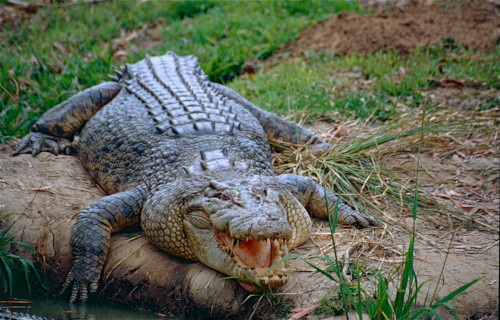
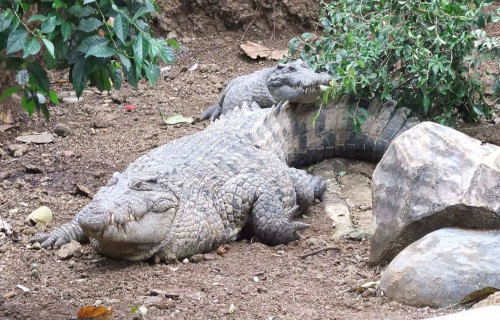
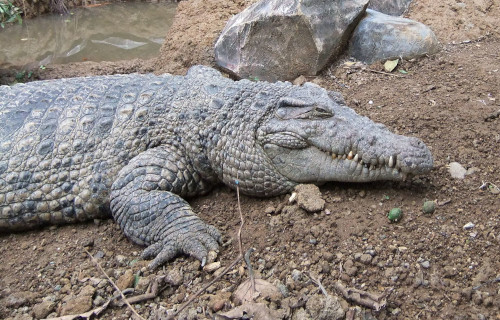
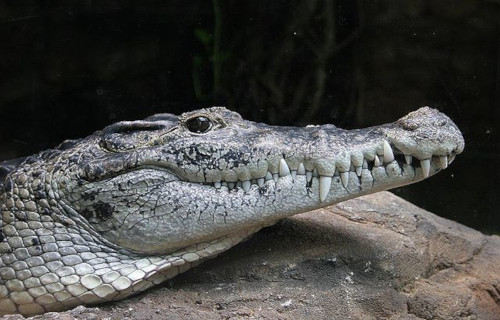
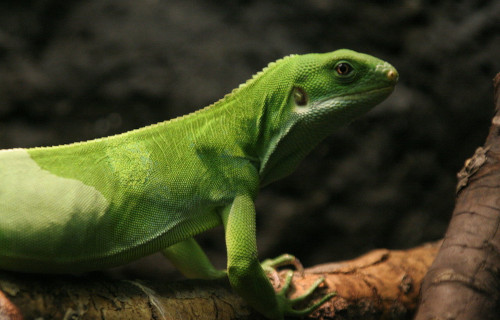
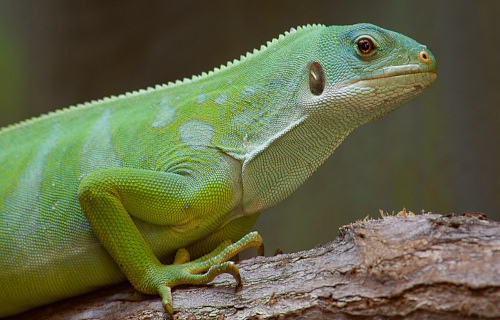
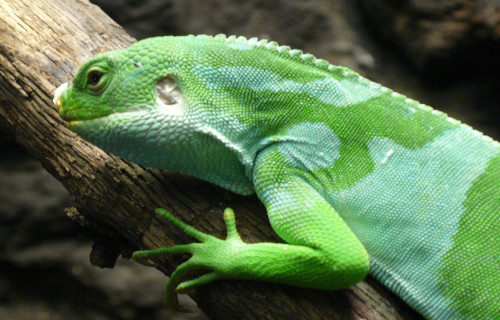
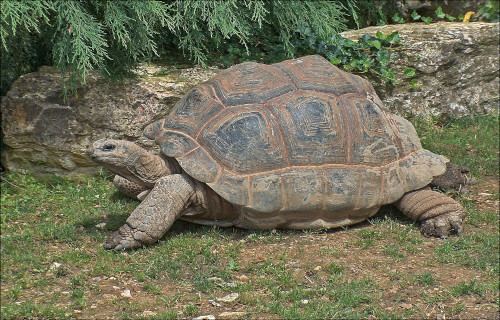
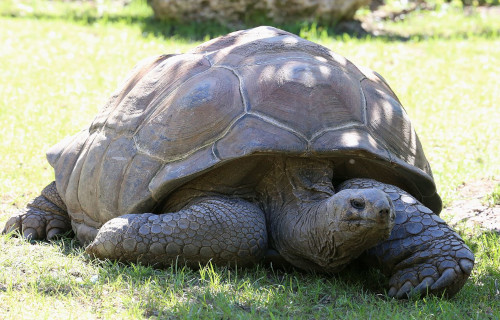
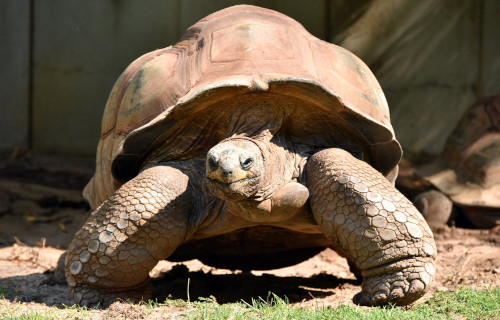
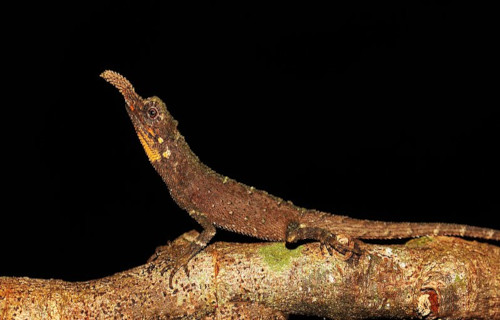
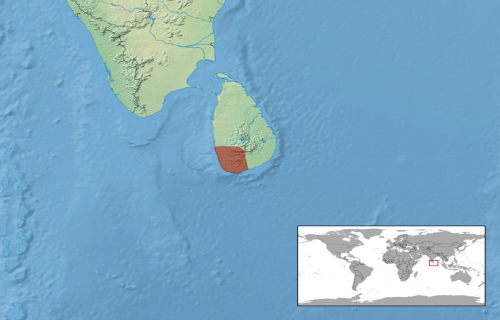
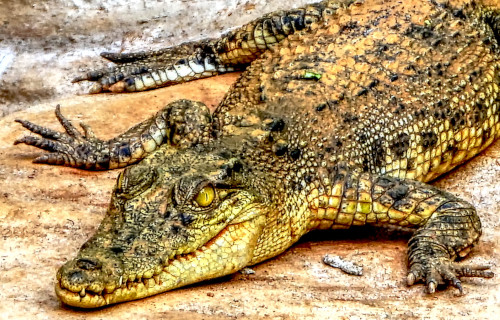
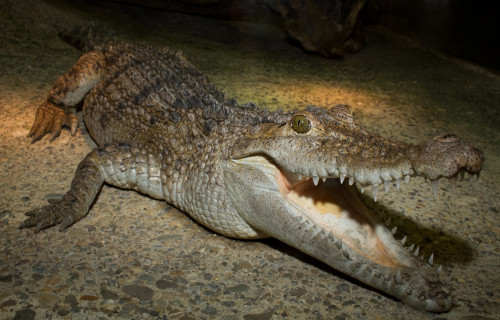
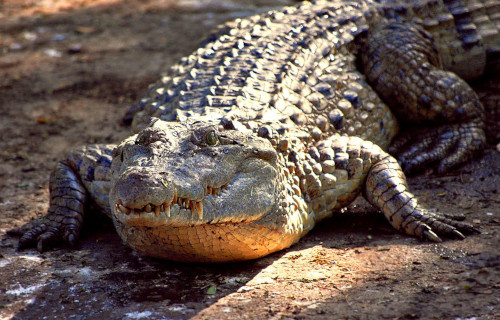
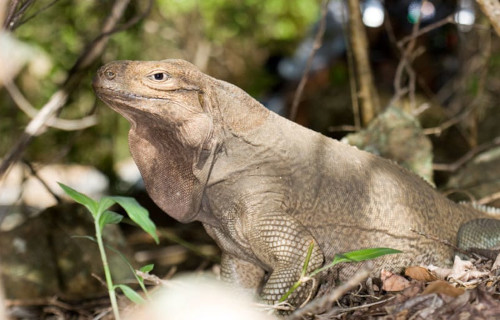
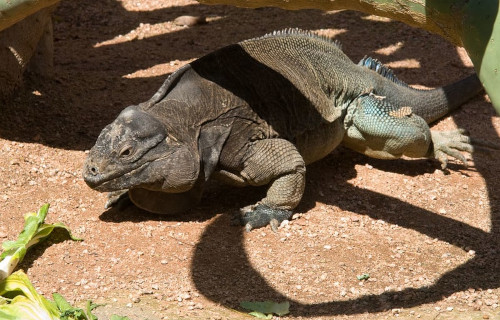
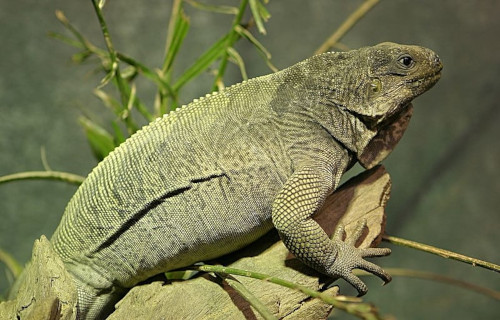









Leave a Reply